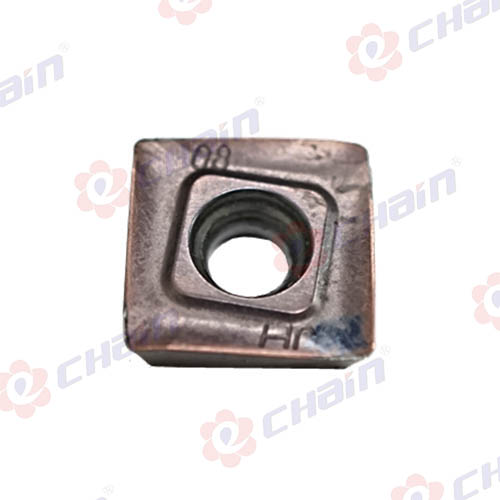How does the geometry of a milling insert affect its performance in various milling applications
2023-10-26
The geometry of a milling insert plays a critical role in determining its performance in various milling applications. Different geometries are designed to optimize the tool's cutting capabilities for specific tasks and materials. Here are some key aspects of milling insert geometry and how they impact performance:
1. Cutting Edge Angle: The cutting edge angle, often referred to as the "lead angle" or "rake angle," influences the direction of the cutting force and chip evacuation. A positive cutting edge angle (e.g., 5-10 degrees) results in efficient cutting and lower cutting forces, while a negative angle may improve tool life but requires more cutting force.
2. Helix Angle: The helix angle is the angle formed by the cutting edge relative to the insert's centerline. It affects the tool's ability to cut smoothly and generate a shearing action. Higher helix angles are suitable for finishing operations, while lower angles are better for roughing.
3. Insert Shape: The shape of the insert (square, round, triangular, etc.) dictates the type of milling operation it is best suited for. Square inserts are versatile and used for general milling, while round or ball nose inserts are ideal for contouring and 3D machining.
4. Corner Radius: Many milling inserts have a corner radius, which reduces the likelihood of chipping at the corners and improves tool life. The size of the corner radius should match the application, with larger radii often used for roughing.
5. Insert Size: The size of the insert affects the chip load, cutting speed, and depth of cut. Larger inserts can handle higher feeds and depth of cuts, which are often required in heavy-duty milling applications.
6. Chipbreaker Geometry: Chipbreakers are features on the insert that help control chip formation and evacuation. Different chipbreaker geometries are designed for various materials and machining conditions. Proper chip control can significantly impact tool life and surface finish.
7. Flute Count: In milling cutters designed for inserts, the number of flutes determines the number of cutting edges in contact with the workpiece. The flute count influences chip evacuation, tool rigidity, and the quality of the surface finish.
8. Insert Material and Coating: The material and coating of the insert also affect its performance. Harder materials are suitable for cutting tough materials, while coatings can reduce friction and extend tool life.
9. Insert Relief Angle: The relief angle is the angle formed between the insert's bottom surface and the workpiece. It affects the insert's ability to penetrate and cut efficiently.
10. Insert Thickness: The thickness of the insert impacts its stability and resistance to deflection during cutting. Thicker inserts are more stable but may require more horsepower to cut.
In summary, the geometry of a milling insert is a critical factor in its performance. The choice of the right geometry depends on the specific milling application, workpiece material, desired surface finish, and cutting parameters. Matching the insert geometry to the task at hand can lead to more efficient cutting, longer tool life, and improved machining results.



